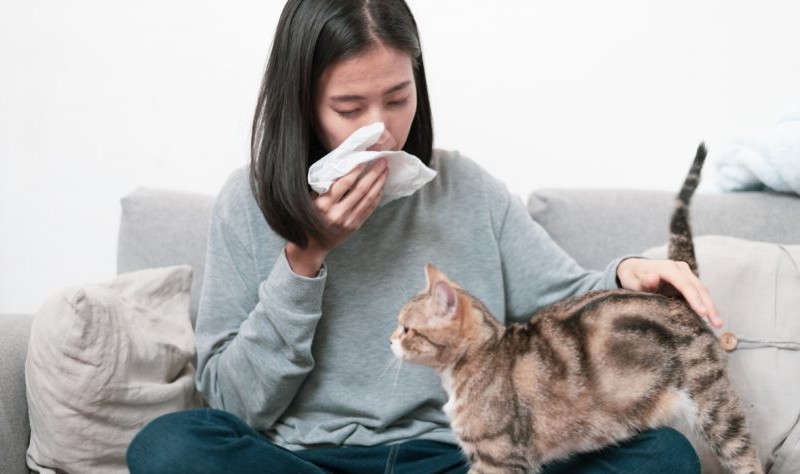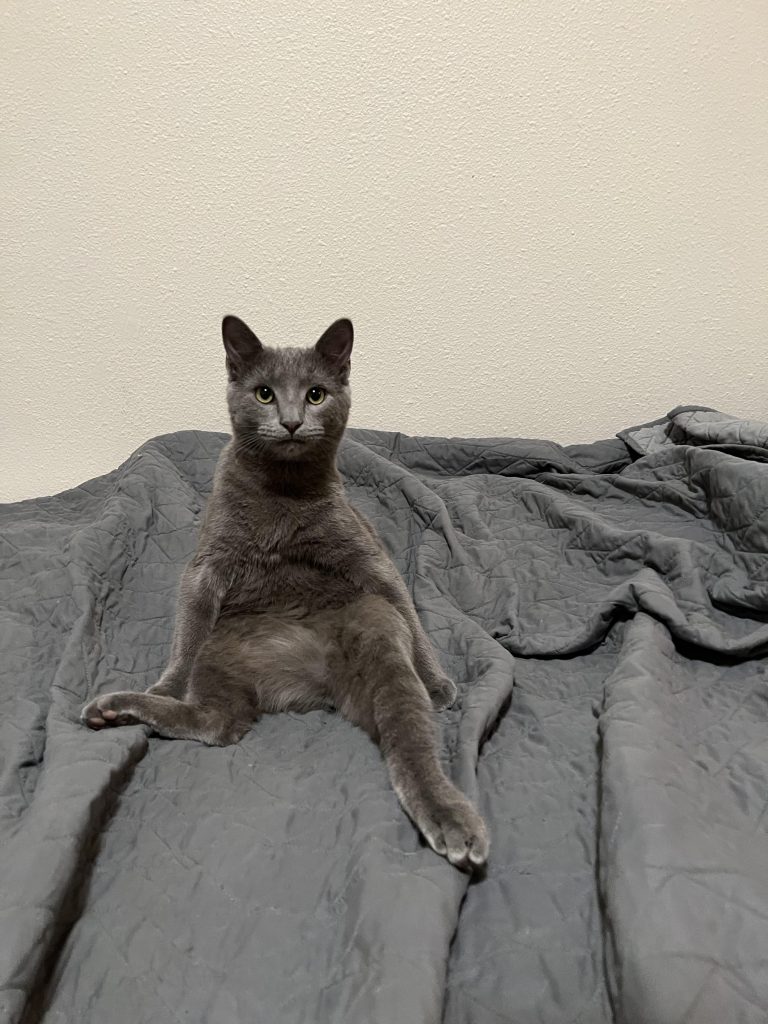To reduce cat allergies, clean your house by vacuuming regularly and washing textiles often. Use HEPA filters and keep pets out of the bedroom.
Understanding how to clean your house for cat allergies is crucial to maintaining a comfortable living environment. Cat allergies stem from proteins found in a cat’s dander, saliva, and urine. Those who suffer from these allergies often face a challenging conundrum: they love their pets but struggle with allergic reactions.
Managing this issue effectively requires a strategic cleaning routine. The goal is to minimize allergen levels in the home without causing distress to either the pet or the inhabitants. Regular dusting, vacuuming with a HEPA filter, and laundering textiles can drastically reduce the presence of allergens. Additionally, restricting a cat’s access to certain areas, such as bedrooms, can provide an allergen-limited sanctuary for sufferers. By following these steps, allergy symptoms can be alleviated, creating a harmonious environment for both humans and felines.

Credit: wamiz.co.uk
Understanding Cat Allergies
Many people adore their furry feline friends. Yet, cat allergies can present quite a challenge. Understanding what triggers these allergies is essential for creating a comfortable environment. Let’s explore the culprits and how they affect us.
Identifying Allergens: The Role Of Cat Dander, Saliva, And Urine
Cat allergens mainly come from dander, which is dead skin cells. Cats licking their fur leave saliva, which also contains allergens. Then there’s urine in the litter box, another common source of allergens.
- Dander: Tiny, almost invisible flakes of skin.
- Saliva: Contains proteins that cause allergies when cats groom.
- Urine: Also has certain proteins and can spread when cats use their litter box.
Symptoms Of Cat Allergies In Humans
Symptoms can appear soon after contact with a cat. They can range from mild to severe, affecting your quality of life.
| Mild Symptoms | Severe Symptoms |
|---|---|
|
|
Allergy Severity: Varying Reactions And Personal Sensitivities
Allergy severity can vary. Some people might only experience minor discomfort. Others could have intense reactions. Below, we detail various allergies and sensitivities.
- Mild Sensitivity: Encountering cats might cause slight discomfort.
- Moderate Sensitivity: Longer exposure can lead to persistent symptoms.
- High Sensitivity: Immediate and severe reactions upon exposure to cats.
Preparations Before Cleaning
Dealing with cat allergies starts with a clean home. Prepare effectively and make your space a comfort zone, not a sneeze zone. Smart preparations are key to winning the battle against allergens. Let’s gear up to tackle those pesky irritants head-on!
Selecting The Right Cleaning Supplies And Equipment
Choose tools and cleaners that lock in allergens, not spread them around. Here’s what you’ll want:
- HEPA-filter vacuum to trap tiny dander particles
- Microfiber cloths to catch more allergens
- Unscented cleaners to avoid respiratory irritation
- Steam cleaner for deep cleaning without chemicals
Creating An Allergy-safe Cleaning Routine
Keep allergens at bay with a consistent cleaning schedule. Here are steps for an effective routine:
| Frequency | Task |
|---|---|
| Daily | Wipe surfaces, sweep floors |
| Weekly | Vacuum and wash bedding |
| Monthly | Clean vents and filters |
Protective Measures: Reducing Personal Exposure During Cleaning
Personal protection is vital. Follow these tips to keep yourself safe:
- Wear a mask to avoid inhaling allergens
- Use gloves to protect your skin
- Keep rooms ventilated to disperse particles
Deep Cleaning Strategies
Living with a cat when you have allergies can be a challenge. Clean house tactics are crucial for reducing symptoms. A deep cleaning strategy lessens the presence of allergens. This guide covers essential steps to maintain a clean, allergen-free environment.
Regular Grooming: Managing Cat Dander At The Source
Regular grooming limits dander and hair in your home. Start with:
- Weekly brushing to remove loose fur.
- Use grooming wipes designed to reduce dander.
- Consider professional grooming for long-haired breeds.
Surface Cleaning: Strategies For Couches, Carpets, And Beddings
Surfaces trap allergens easily.
| Surface | Cleaning Strategy |
|---|---|
| Couches | Vacuum daily with a brush attachment. |
| Carpets | Steam clean every three months. |
| Beddings | Wash in hot water weekly. |
Besides, use slipcovers and washable rugs for easier cleaning.
Air Quality Control: Hepa Filters And Ventilation Systems
Maintaining good air quality reduces allergen impact.
HEPA filters trap dander effectively. They should be in:
- Vacuum cleaners.
- Air purifiers throughout your home.
- Central heating and cooling systems.
Ensure proper ventilation. Open windows when weather permits. Use exhaust fans to reduce humidity and potential allergens.

Credit: www.reddit.com
Daily Maintenance For Allergy Management
The quest to keep a tidy home takes on added significance when sharing it with a furry friend, particularly for those with allergies to cat dander. Implementing a regimen for daily maintenance can drastically reduce allergens and create a comfortable environment for everyone. From setting a cleaning routine to revising how we interact with pets, the strategies below offer a comprehensive approach to managing cat allergies.
Consistent And Targeted Cleaning Schedule
Routine cleaning is paramount in managing allergens in a home with cats. Commit to a daily schedule that targets areas where dander accumulates. Use a high-efficiency particulate air (HEPA) filter vacuum to clean carpets, upholstery, and drapes. Wipe down hard surfaces with a damp cloth. Remember to clean cat bedding, toys, and litter boxes regularly. Create a checklist to ensure no area is neglected.
Designating Cat-free Zones To Minimize Allergen Spread
Limiting exposure can provide relief to those with allergies. Establish specific rooms as cat-free zones, especially bedrooms. Keeping the door closed and using air purifiers can keep these areas nearly dander-free. Outfit these spaces with cleanable or washable materials to maintain low allergen levels.
Establishing Hygiene Practices For Pet Interactions
Good hygiene can limit the spread of allergens after interacting with your cat. Wash hands thoroughly with soap and water. Consider changing clothes to avoid transferring dander to other parts of the home. Grooming your cat frequently can also reduce the amount of loose fur and allergens. Use gloves and brush the cat outside when possible to keep the allergens out of the house.
Long-term Allergy Reduction Techniques
Living with cats doesn’t have to mean living with allergies.
By adopting long-term allergy reduction techniques, you can create a comfortable environment.
These strategies can help you breathe easier and keep your furry friend close by.
Allergen-resistant Furnishings And Renovations
Choose the right materials to keep allergens at bay.
- Hardwood flooring over carpets traps fewer allergens.
- Use washable curtains and slipcovers for easy cleaning.
- Leather furniture minimizes dander accumulation.
Diet And Supplements For Cats To Reduce Allergens
A cat’s diet can impact the allergens it produces.
Introducing omega-3 and omega-6 fatty acids to their diet helps.
This improves skin health and reduces shedding and dander.
Professional Cleaning Services And Allergy Immunotherapy Options
Deep cleaning by professionals removes stubborn allergens.
Regular sessions ensure a consistently clean space.
Allergy shots may provide long-term relief for severe cases.

Credit: www.bondcleaninginbrisbane.com.au
Frequently Asked Questions On How To Clean House For Cat Allergies
How Do I Get Rid Of Cat Allergens In My House?
Regularly clean your home, focusing on fabrics where allergens accumulate. Use HEPA filters and frequently bathe your cat. Vacuum often, and consider using allergen-reducing sprays. Limit the cat’s access to certain areas to contain allergens.
How Do You Clean A House With A Cat Allergy?
To clean a house for cat allergies, frequently vacuum with HEPA filters, use allergen-proof mattress covers, wash bedding in hot water weekly, apply high-efficiency air purifiers, and keep the cat out of the bedroom to minimize exposure.
How Long Does It Take To Get Cat Allergens Out Of House?
Removing cat allergens from a house typically takes between a few weeks and several months. Frequent cleaning can help speed up this process.
How Do You Live In A House With Cats When You Are Allergic?
To live with cats despite allergies, create pet-free zones, use high-efficiency particulate air (HEPA) purifiers, clean frequently, bathe your cat regularly, and consider allergy medications or immunotherapy.
Conclusion
Managing cat allergies doesn’t mean compromising on the joys of pet ownership. Consistent cleaning routines can reduce allergens significantly. Embrace these strategies to create a comfortable home for everyone. Remember, tackling the fur and dander battle is key to breathing easier.
Your efforts will make for a happier, healthier living space shared with your beloved feline.

